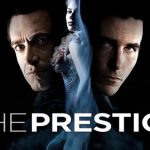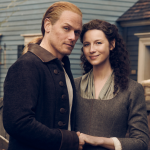𝘼 𝘾𝙝𝙧𝙞𝙨𝙩𝙢𝙖𝙨 𝘾𝙖𝙧𝙤𝙡 (𝟮𝟬𝟬𝟵)

A CHRISTMAS CAROL Clip – “Marley Was Dead” (2009)
Disney’s A Christmas Carol, directed by Robert Zemeckis, is a visually stunning adaptation of Charles Dickens’ classic novella. Released in 2009, this version employs motion-capture animation, allowing the characters to retain realistic expressions and movements while embracing an imaginative, stylized environment. With Jim Carrey playing multiple roles, including Ebenezer Scrooge across various ages and the three Christmas spirits, the film captures both the dark and redemptive themes of the original story.
Plot Overview
The story follows the miserly Ebenezer Scrooge, a man who despises Christmas and human connection. On Christmas Eve, he is visited by the ghost of his former business partner, Jacob Marley, who warns him of the dire consequences awaiting him in the afterlife unless he changes his ways. Marley foretells the arrival of three ghosts: the Ghosts of Christmas Past, Present, and Yet to Come, who each take Scrooge on a journey through his life. Through these visits, Scrooge confronts his childhood loneliness, adult greed, and the future consequences of his actions, prompting him to realize the value of compassion and generosity.
Visual Style and Animation
This adaptation is notable for its use of motion-capture technology, allowing for expressive performances and detailed animation. Zemeckis’ choice to use motion-capture enhances the surreal and fantastical elements of the story, from the ghostly appearances to the whimsical architecture of Victorian London. The dark, atmospheric visuals add a slightly eerie quality to the tale, making it accessible for family viewing while retaining the gravity of Scrooge’s journey.
Jim Carrey’s Performance
Jim Carrey’s portrayal of Scrooge is central to the film’s appeal, as he deftly transitions between the different emotional states of the character. From Scrooge’s initial bitterness to his eventual joy, Carrey’s versatility and expressive abilities bring a unique energy to the role. Additionally, Carrey voices all three Christmas spirits, showcasing his range and adding a layer of continuity to Scrooge’s spectral encounters.
Themes
Dickens’ themes of redemption, social responsibility, and the Christmas spirit are carefully woven into this adaptation, preserving the moral core of the story. Scrooge’s transformation from a miserly figure to a generous man serves as a reminder of the importance of compassion, kindness, and the impact one person can have on others. The film effectively emphasizes the consequences of Scrooge’s selfishness while showing that change is possible, no matter how late it may seem.
Reception and Legacy
While A Christmas Carol (2009) was met with mixed reviews, largely due to the uncanny valley effect of motion-capture animation, it has gained a following as a faithful and visually striking adaptation of Dickens’ novella. The film is often revisited during the holiday season, appreciated for its depth, Carrey’s performance, and Zemeckis’ imaginative direction.













